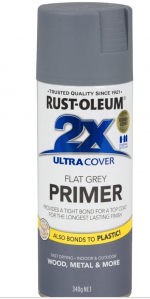FYI, for people who were interested in my birch panel prep. I did some more research yesterday and you
can in fact use acrylic/water-based gesso over the
Zinsser Universal Sanding Sealer. I am so relieved about this. It will accept any type of overcoat,
and can also be applied to any finish that is already there. However, I suggest you always give a panel a good sanding before applying any sealer so the sealer has something porous to soak into, preferably the raw wood.
The Universal Sanding Sealer is wax-free, and alcohol-based (can be cleaned up with alcohol), so it's not an oil-based shellac like other sealers. I've been using this stuff for many years. I mix it with a 2:1 DH alcohol mixture and five sandings in between.
This was what I was wanting for this one particular panel I'm about to work with. It is just a little different from what I usually do because it had water-based yellow milk paint over the raw wood (and Sharpie writing) to begin with. I need to sand that off, seal it, then gesso it so I can start a new oil painting on it. And I'm happy I can save the panel now instead of buying a new one.
PS: I do not sand it five times on the back. I just give it two generous coats on the back. The sides, because I use a 2-inch profile, do get the same pretty sandings as the front. Because I'm putting gesso on the front of this particular panel, I will probably do
four coats instead of five.
My
personal opinion on the Rustoleum Auto Primer is not to use it on professional birch wood artist's panels. You know, that paint is really meant to be used on metal and meant to take enamel paint on top. It's for cars and it helps to protect from rusting. This is just my opinion and I don't want to be a contrarian. I've just worked with professional woodworkers that
specifically make artists panels and canvases (and easels). This has been their business for generations and I trust their opinions wholly.
As for MDF or particle/pressed wood, or even Masonite, I don't work with those surfaces, and admit, I can't advice on those, but I suspect you can just prime Masonite and get going. I do think pressed wood would still need sealing. It would swell and contract all the same.




